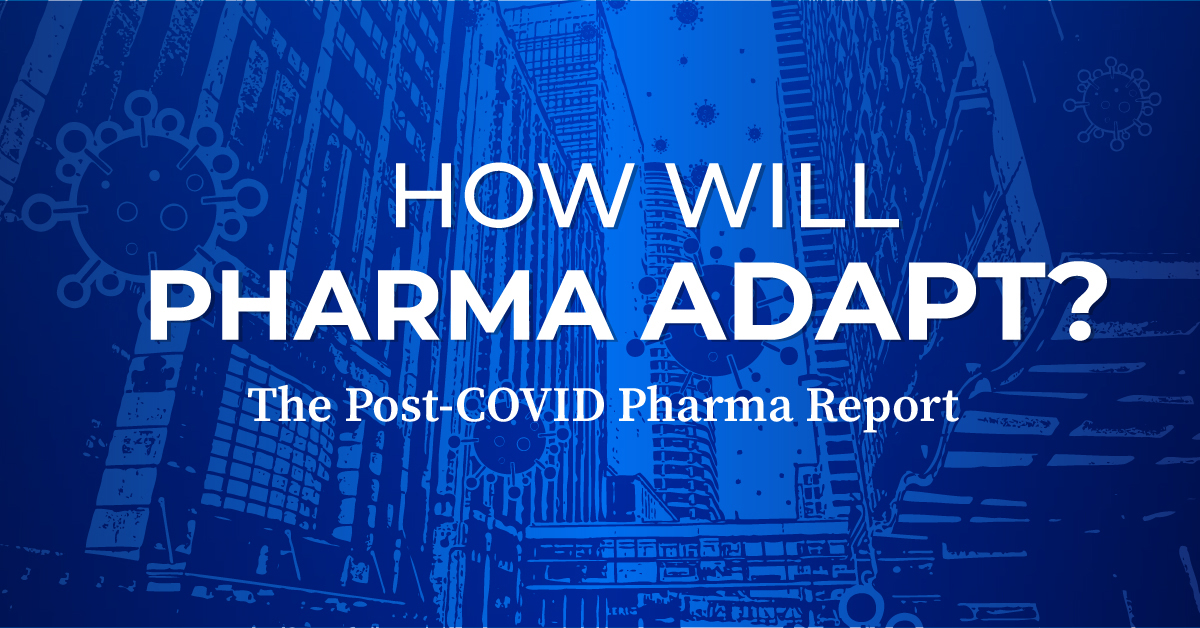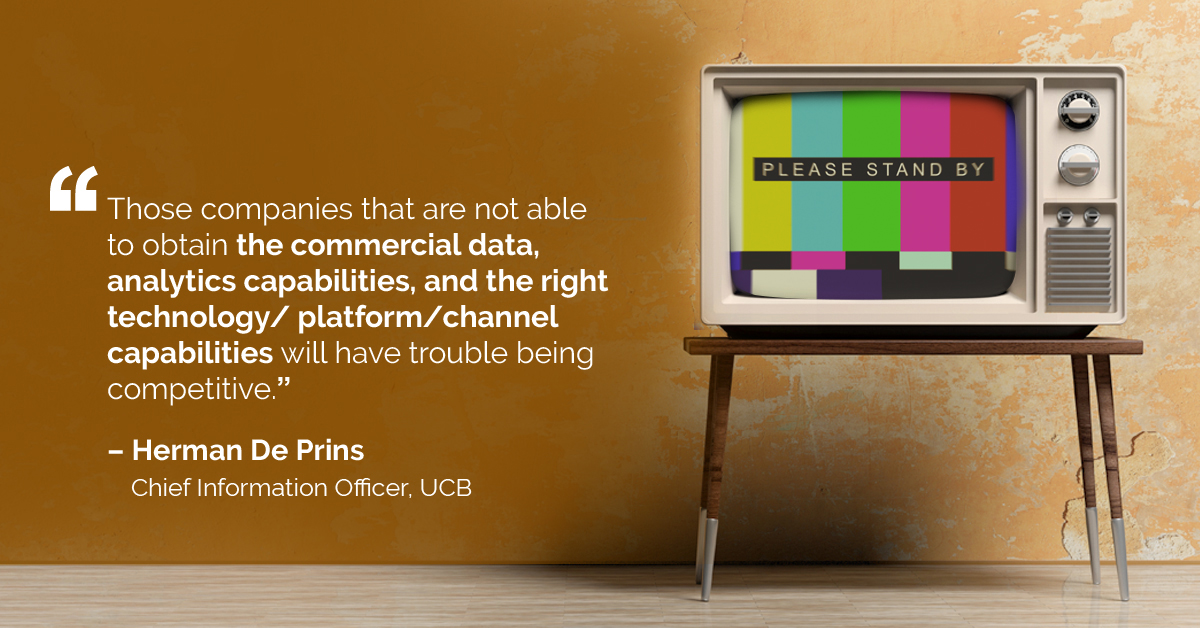2021 Outlook: The future for life sciences customer experience

Research from a large-scale survey of 1000+ senior pharma professionals has highlighted the divide between digitally adept companies and those that have been slow to adopt technologies. We look at how the customer experience is changing due to COVID-19.
Historically, pharma has lagged behind other industries in adopting digital solutions, but with COVID-19 catapulting the sector, and healthcare in general, into a new digital era, the landscape is changing significantly and rapidly. What will this transformation mean for pharma’s customer experience?
In an April survey conducted by Reuters and Omnipresence, 1,363 senior professionals mostly working in pharma (82.8%) in the EMEA region (73%) and biotech, medtech/device or consumer health companies reported on how life sciences organisations were adapting to the ‘new normal’.
With severe restrictions on face-to-face engagements during the pandemic, digital engagement has been one of the few ways companies have been able to connect with customers. Findings from the report highlighted an urgent need for investments in customer relationship management (CRM) capabilities.
A unified approach
According to Sanjay Virmani, CEO of Omnipresence, a key struggle for pharma companies comes from the lack of a common data model, preventing them from having a connected and holistic view of the individuals they’re trying to engage with.
“When an organisation looks at an HCP or customer, are they a marketing customer, a medical affairs customer, a sales customer?”
“If different departments are not coordinated, how can the customer get all the information they need with the proper context? And if the company does not provide that seamless experience, the customer has to glue it together themself or not get it” - Sanjay Virmani
“It is not as if companies have not invested in the infrastructure and are not generating this data. The problem may be that there is no unification that is so essential to going in that agile, omnichannel direction.”
Unified platforms that can pull in data from multiple digital channels can help create a better customer experience according to Virmani. “There is a need to reinvest in the technology stack to be able to drive unification, but there is also a need to reinvent the cultural stack so that different departments are working in a coordinated manner,” he said.
“If different departments are not coordinated, how can the customer get all the information they need with the proper context? And if the company does not provide that seamless experience, the customer has to glue it together themself or not get it.”
In the report, 70% of respondents said they needed better ability to surface customer insights from various channels into digital workflows/CRM. 75% said they needed a more agile method to ingest and consolidate insights across channels and 65% said their CRM needed to improve the method and quality of data collection.
Pharma is also failing to utilise engagement tools, such as chatbots, even though many sectors are using them on some level. According to a report by Juniper Research, the banking sector is expected to automate up to 90% of customer interactions using chatbots by 2022.
“About 40% [of respondents] were not doing that at scale across multiple countries, regions, languages, and products,” said Virmani.
Hybrid strategies that enable companies to have the flexibility to shift between virtual and in-person engagement are likely to be where the industry is heading, Herman De Prins, chief information officer at UCB, explained, adding: “I don’t think we will have complete virtual HCP engagement post-pandemic. We already saw this in the first few months of the pandemic; there was an immediate move towards complete virtual HCP engagement, but once the pandemic restrictions were slightly loosened, we saw face-to-face coming back relatively strong. We do believe that remote engagements will continue — but they will be a hybrid engagement and not a purely virtual one.”
This survey also showed how companies were putting specific strategies in place to improve HCP engagement through modern digital channels, that were considered “non-traditional” pre-pandemic. 73.6% of respondents said they expected the use of social media to engage with HCPs to increase over the next 12 months. However, the transition to digital commercial operations has proved challenging for some companies with 32.3% of respondents saying their organisation did not have the commercial data and analytics capabilities to support digitisation of sales and marketing operations and 28.6% stating their organisation did not have the right technology/platform/channel capabilities to support the digitisation of sales and marketing including virtual sales capabilities.
“CRM is only a minor part in the broader omnichannel approach. Changing only the CRM would achieve nothing but spend more money. What is truly needed is a deep change in the analytical and go-to market approaches and optimising the new channels” - Florent Edouard
Florent Edouard, SVP, global head of commercial excellence at Grünenthal Group, commented: “The 60% or so who think they are ready for complete digitisation of sales and marketing operations say so because they have not truly tried it.
“This is probably the most challenging part of the digital transformation, as we need to acquire skills such as advanced analytics that we currently do not have, turn our customer model fully around, and implement tools that are able to create sophisticated AI-powered models that can manipulate billions of data points. Very few companies are equipped to do that in their commercial entities.”
Time for change
Commercial teams should now address the gaps they have in data and analytics and accelerate the adoption of omnichannel capabilities. While CRM was traditionally built for a time where there were only one or two channels, it is now becoming a thing of the past.
Omnichannel approaches that allow bi-directional engagement on all modern channels provide a seamless and individualised customer experience that will soon become the ‘better normal’. Key benefits could be medical chatbots answering simple dosing questions, HCPs triggering inbound virtual meeting requests and ensuring compliant social media engagement from field teams to HCPs.
But what exactly does this mean for life sciences companies? “This means we need much better CRM capabilities than pre-pandemic. That does not mean these capabilities are not available. It just means they have not been exploited” said De Prins.

Organisations have started to recognise the urgency, with 79.7% of survey respondents stating the pandemic will influence priorities towards investments in customer experience.
“CRM is only a minor part in the broader omnichannel approach,” said Edouard. “Changing only the CRM would achieve nothing but spend more money. What is truly needed is a deep change in the analytical and go-to market approaches and optimising the new channels.”
Virmani agreed that the pandemic has made the need for better insights and analytics from CRMs and other CX systems much clearer and more urgent. “There will be a greater emphasis on the connected customer journey. Many companies are already thinking about customer experience as a competitive edge.”
Maximising the best management of customer experiences is one of the essential strategies that pharma companies can take to stand out from the competition. Indeed, companies that will triumph in the post COVID-19 world are the ones that continue to allocate resources, execute omnichannel development, remove silos and move towards a more unified and agile digital approach.
As the pandemic continues to accelerate the pace of digital change around healthcare, organisations need to grasp the opportunities this shift presents to make far-reaching improvements to their customer experience.
Check out the full report: COVID-19: Accelerating Digital Transformation in Life Sciences
Download the executive summary: COVID-19: A Pulse of the Life Sciences Industry
About Omnipresence

Omnipresence is a unified and intelligent customer experience management platform (CXM) for healthcare and life sciences organisations with CRM, omnichannel engagement, advanced analytics, and AI capabilities in a single platform.











